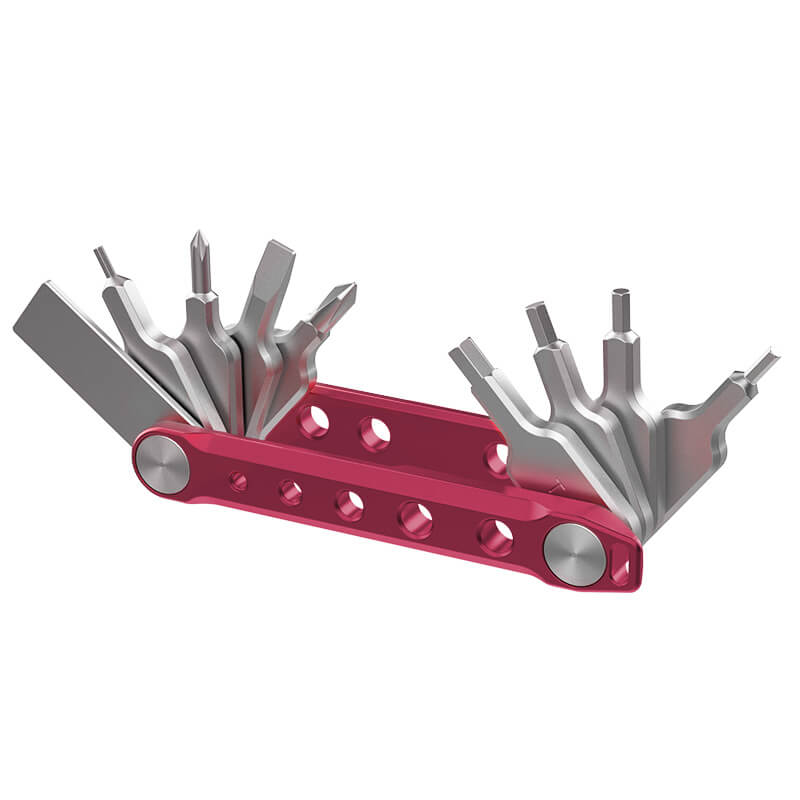Action cameras have completely changed how we capture our adventures. These small, lightweight devices are tough and made for taking high-quality photos and videos, even when you're on the move. Whether skiing down a mountain, cycling through rough terrain, or swimming underwater, action cameras allow for incredible detail in recordings. But to get the best shots, knowing how to mount your camera securely really matters. This blog explores 14 effective ways to attach an action camera to your body, to help make it easy to capture breathtaking footage while keeping the camera safe and steady. Let's read on!
1. The Classic Helmet Mount
The classic helmet mount is a popular choice for attaching an action camera, and it's easy to see why. To use this method, simply attach the camera to the top or front of your helmet using special adhesive mounts or brackets designed just for helmets. This setup allows you to capture all the action from a first-person view, which is perfect for activities like biking, skiing, or any sport where you wear a helmet. When using a helmet mount, ensure the camera doesn't obstruct your view or interfere with how the helmet fits. You want to be able to see clearly while enjoying your adventure! Make sure that the mount is securely attached, as a loose camera can shift during movement or even fall off altogether, which could not only ruin your footage but also damage the camera.
2. The Head Strap Mount

If you want to record action camera footage without using your hands, the head strap mount is a fantastic choice. The camera is positioned at the level of your forehead thanks to an adjustable strap that wraps around your head. Since comfort is important, tighten the strap just enough to allow for freedom of movement while maintaining the camera's security. Checking the fit frequently is advised because the strap may slip or shift during vigorous exercises.
3. The Mask Mount
The mask mount is ideal for taking breathtaking underwater pictures when snorkeling or scuba diving. The action camera is fastened directly to a dive or snorkeling mask by using appropriate mounts made specifically. With this configuration, you can capture all you observe beneath the surface. For optimal stability, it is advised to use a mount that is compatible with the particular mask model you own. Remember that this mount is less adaptable than other choices because it is primarily intended for use in aquatic activities. Still, it's a great option for gorgeous images of the ocean!
4. The Bite Mount
The bite mount is a fun way to capture unique footage while surfing or doing other extreme sports. To use it, simply insert the mount into your mouth and bite down to hold it in place, allowing for hands-free filming from an exciting angle. Before recording, ensure the camera is secure by practicing holding it. Though this mount provides great views, it can strain your jaw and lead to fatigue after extended use, so it's best for short filming sessions.
5. The Chest Harness Mount

Often referred to as "The Chesty," the chest harness mount is made to allow you to record steadily while freeing up your hands. The camera is held at chest level by this elastic harness that wraps around your torso. Even though it makes filming simple, the lower angle can not always catch what's happening in front of you, particularly when snowboarding. A backpack mount or other alternative may provide better angles because your arms or other equipment may cover up the harness.
6. The Shoulder Mount
The shoulder mount provides an innovative way to film. To set it up, you attach the camera to the shoulder strap of your backpack or a dedicated harness. This positioning allows for unique over-the-shoulder shots that add variety to your footage. To maintain comfort, the weight must be correctly balanced, particularly over extended periods of use. Although this mount provides intriguing angles, its range of motion is more limited than other solutions.
7. The Belt Mount
The belt mount is a handy accessory that lets you attach your action camera to your waist or belt. This is a comfortable and low-profile mounting way while doing different activities, like walking, running, or biking. To use a belt mount, just clip or slide the camera onto the mount and secure it to your belt. Some mounts come with straps to help keep everything snug and in place, so you don't have to worry about it moving around too much.
8. The Backpack Mount

With the help of this useful attachment, you can fasten your action camera to your backpack's straps. This makes it possible to record video while riding or hiking. It is simple to operate; just clip the camera onto the strap and fasten it firmly. In contrast to a chest mount, a backpack mount doesn't impede your movement with a tight harness and is simpler to remove. It captures unusual angles that highlight your surrounds as well as the landscape in front of you.
9. The Wrist (or Hand) Mount
Wearing the wrist or hand mount is comfortable, as it is usually lightweight and adaptable. It's perfect for sports or adventures where you need quick access to the camera without holding it. Many wrist mounts have a 360-degree rotating platform that allows you to quickly switch to selfie mode. This is particularly useful for skydivers or anyone who wants to capture dynamic shots from different angles.
10. The Finger Grip Mount
This attachment, which fits easily over your fingers, allows you to move the camera and shoot fascinating shots without the need for bulky gear. It's really useful for activities when you want to have your camera close at hand, like biking and skating. It's crucial to maintain a strong grasp to avoid any unintentional drops, especially when you're moving.
11. The Magnetic Mount
The magnetic mount is a clever accessory that lets you attach your action camera to any metal surface. With its strong magnet, you can quickly set up your camera on cars, bikes, or other metallic objects without fuss. But is the magnetic mount safe for your action camera? Yes, as long as you use it correctly. Simply place the camera against a suitable surface and let the magnet hold it securely-some mounts even have safety locks for extra security.
12. The Clip Mount

The clip mount is an adaptable attachment that may be used to safely fasten your action camera to headwear, belts, pockets, backpacks, and other surfaces. To secure the camera, just slide the clip mount onto the surface. Its sturdy design allows you to quickly make adjustments and capture a variety of viewpoints, perfect for outdoor activities like riding, climbing, and hiking. Just make sure the clip is tight to prevent unintentional drops.
13. The Ankle Mount
The ankle mount attaches your action camera to your ankle, providing a unique filming perspective. It's great for activities like skateboarding, skiing, or biking, where capturing ground-level shots enhances your footage. While not as common as helmet or chest mounts, the ankle mount is gaining traction among adventurous users. However, this mounting method can increase the risk of damage to the camera due to potential impacts with the ground or obstacles. To use it, secure the adjustable straps around your ankle and attach the camera, ensuring it's fastened securely to minimize drops and damage.
14. The Cap Mount
Action camera can also be fastened to a hat or cap using a cap mount. It typically features a clip or bracket that secures the camera to the brim or another part of the hat. This setup is ideal for capturing first-person perspective footage. As a steady and practical means to shoot video without interfering with your motions, cap mount is adaptable for a variety of sports like riding, skiing, and hiking.
Select the Best Mount for Your Action Camera!
Mounting your action camera the right way is important for getting awesome footage and keeping both you and your camera safe. There are lots of mount options available, so you can choose one that works for your activity and how you want to shoot. Trying out different mounts can also make your filming more exciting by giving you new angles and creative shots that highlight your adventures!






